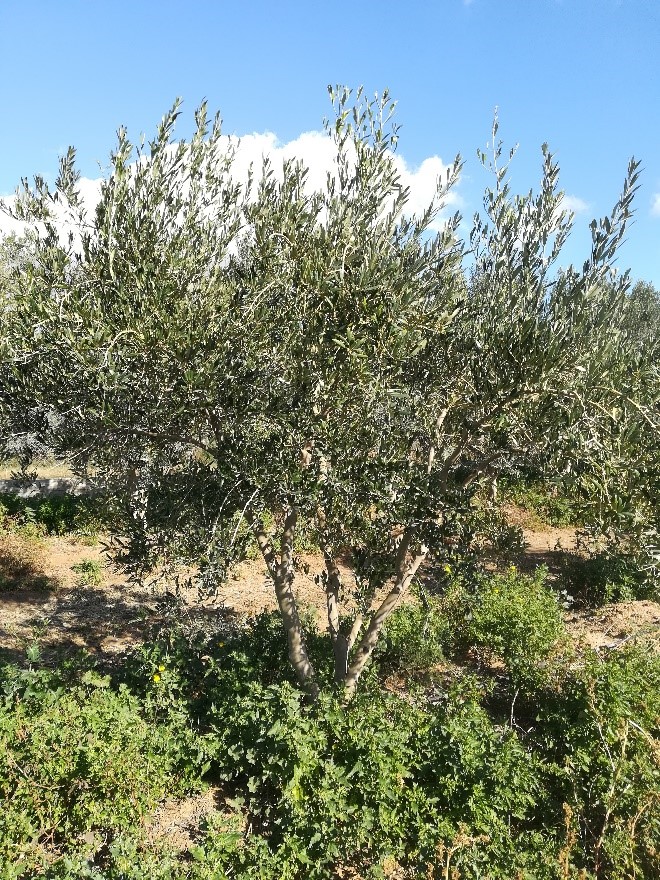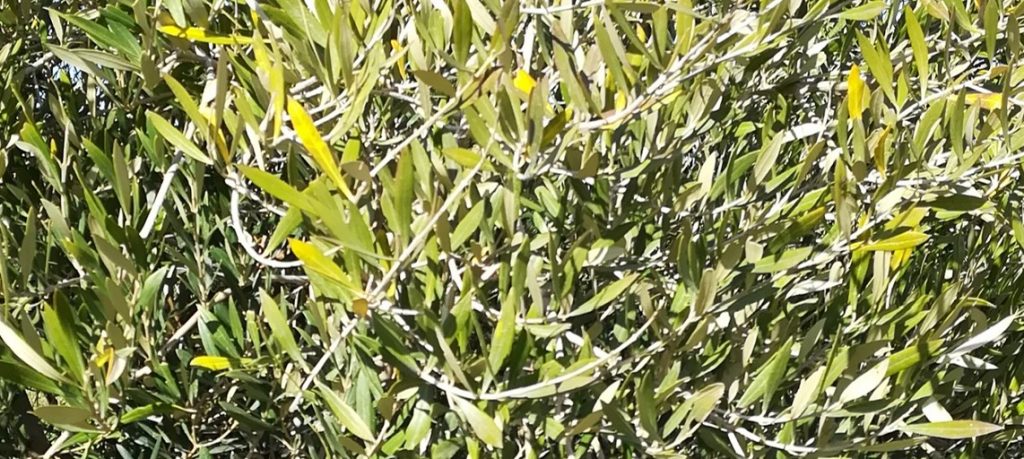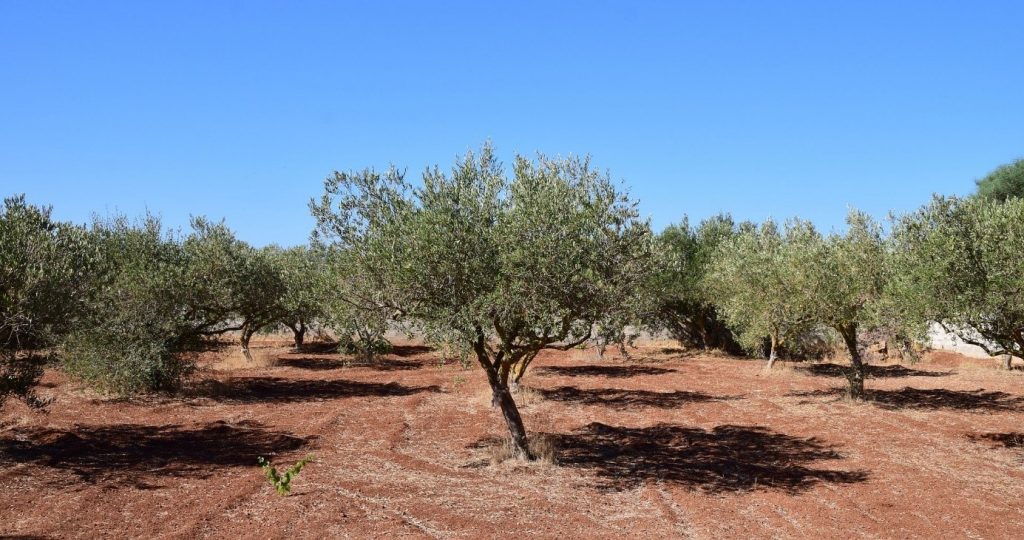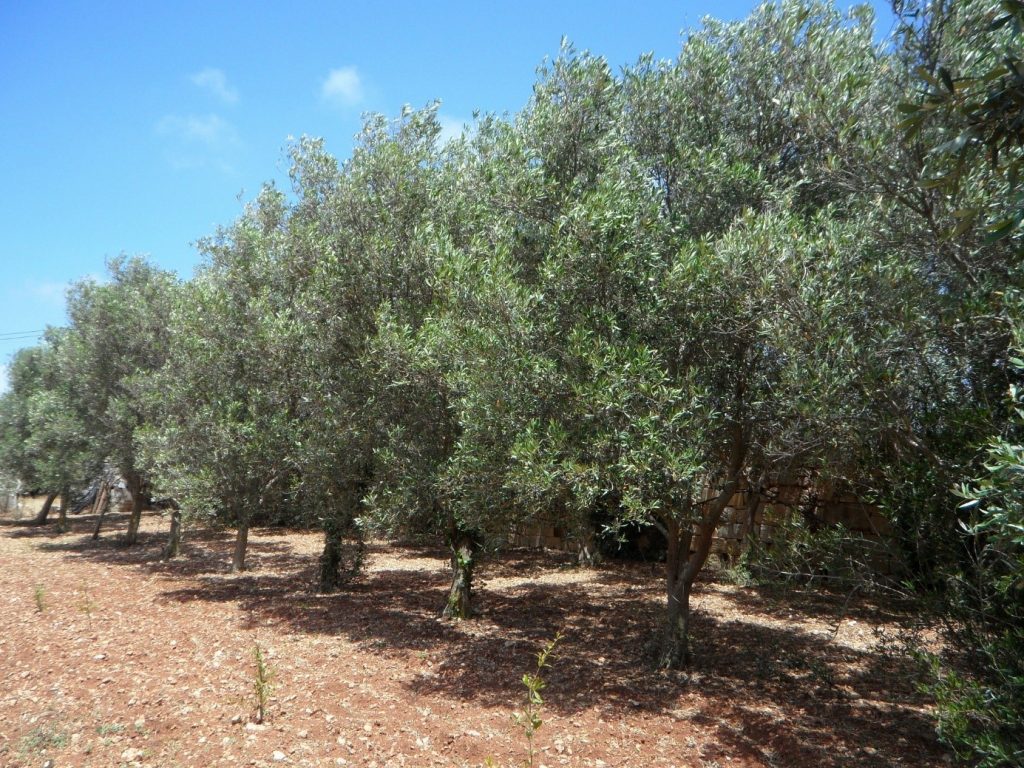As soil-borne fungi, verticillium initially invades the root system of olives when soil temperatures are cool. The fungus does not grow above 30°C. After penetrating the roots, the fungus grows and moves through the plant in the water-conducting (vascular) tissues eventually invading branches and twigs. This progressive invasion usually occurs in late winter through spring. With the onset of high summer temperatures, the fungus is inactivated. By then, unfortunately, the damage has been done and infected trees begin to exhibit symptoms. The presence of the fungus in the vascular system interrupts and reduces the water movement from the to brown. Leaf and fruit drop follows, depending upon the severity of the infection and the amount of wind and heat stress present. Flower clusters on affected branches may die and remain attached. The bark may become bluish. Individual branches, large portions of a tree or the entire crown may die in one season. Death of the entire tree, however, rarely occurs. Instead, new growth develops from unaffected portions of the tree and suckering from the crown proliferates. This new growth often becomes infected and the cycle repeats the following year. The vascular system of verticillium affected trees is characteristically stained. The xylem, new wood inside the cambium or green layer just inside the bark of branches, stems and roots, is streaked green or brown. Vascular discoloration, though not always present, is a distinctive and helpful diagnostic symptom. Olives show less coloration than other species. Cut through and peel back the bark to expose the discolored tissues of affected branches. A laboratory culture is required for a positive identification of the verticillium wilt fungus.
Verticillium wilt occurred on the five hectares large olive orchard of farmer Nadhir Jedidi located in Bir Bouregba, Northwest of Tunisia. Apoplexy, the acute form, is characterized by the rapid death of one or more limbs of a tree. Leaves on affected branches lose their intense green colour, turn light brown, roll back and dry up, necrotic leaves remaining attached to the shoots. Under Mediterranean conditions this type of symptoms usually develops in late winter till early spring. When it occurs on young plants, death of the affected plants is common.
The farmer applied two soil applications with a single dose of 1.5 kg Sanbio PLANTA in 500 liters of water. The time interval between the two applications was three weeks.
As a result of the curative treatment, the breakout of Verticillium wilt was stopped and the treated trees have been recovered.

Figure 1. The onset of Verticillium wilt disease was observed on individual yellow-stained leaves

Figure 2. The number of wiltered leaves has increased rapidly

Figure 3. Verticillium wilt symptoms on a branch

Figure 4. Recovered olive trees

Figure 5. Recovered olive trees